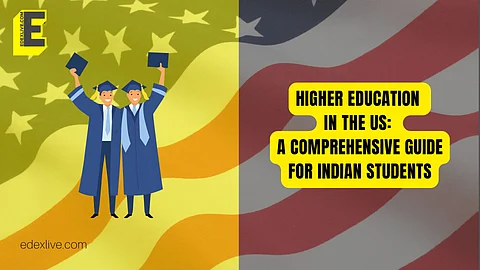

The United States remains a top destination for Indian students pursuing higher education, thanks to its globally recognised universities, cutting-edge research facilities, and strong career prospects.
In the 2023-2024 academic year, over 3,51,602 Indian students enrolled in US institutions, making India the largest source of international students. With a well-structured approach to admissions, visa procedures, and career planning, Indian students can make the most of their educational journey in the US.
One of the primary reasons students choose the US is its world-class education system. Prestigious institutions like Harvard, MIT, and Stanford offer globally accredited degrees across a diverse range of disciplines. According to the Open Doors 2024 Report, international student enrollment in the US reached 1.1 million, with a remarkable 23% increase in Indian student numbers.
The appeal lies in various factors, including top-ranked universities with innovative curricula, access to state-of-the-art research labs and funding, and strong industry connections in Science, Technology, Engineering, and Math (STEM), business, and healthcare.
A degree from a US university provides global recognition and opens doors to career opportunities worldwide.
The admission process to US universities requires careful planning. Most institutions mandate standardised test scores such as the GRE (Graduate Record Examinations), GMAT (Graduate Management Admission Test), SAT (Scholastic Assessment Test), or TOEFL/IELTS (Test of English as a Foreign Language/International English Language Testing System).
Additionally, a strong academic record, a well-crafted Statement of Purpose (SOP), and compelling Letters of Recommendation (LORs) are essential components of the application.
US universities have two primary intakes: the Fall intake (August/September), which serves as the major admission cycle, and the Spring intake (January), which offers a smaller selection of programs. Given the competitive nature of admissions, students should apply 6-12 months in advance.
Securing an F-1 visa is a critical step for studying in the US. To obtain this visa, students must be admitted to a SEVP-approved institution and receive an I-20 form from their university. The visa process includes a mandatory interview at a U.S. consulate, and early preparation is crucial due to the high volume of applicants.
Postgraduation, students have access to work opportunities through Optional Practical Training (OPT), which allows them to work in their field of study for up to three years in STEM fields. Many students transition to long-term employment in the US through the H-1B visa program. Ongoing US visa reforms may further prioritise graduates from American institutions, enhancing their employment and residency prospects.
Career opportunities in the US are abundant, particularly in fields like technology, engineering, healthcare, and finance. Many universities offer on-campus jobs, graduate assistantships with tuition waivers and stipends, and merit-based scholarships to help students manage their finances.
In 2023, approximately 97,556 Indian students participated in OPT, reflecting the increasing demand for practical work experience.
While the US offers numerous advantages, studying abroad presents certain challenges. High tuition fees make financial planning and scholarship applications essential. Cultural adaptation can be another hurdle, but engaging with diverse communities helps students adjust more smoothly.
Additionally, visa and immigration policy changes can impact long-term career plans, making it important to stay informed.
Despite these challenges, the US continues to be a premier destination for Indian students, offering unparalleled academic and professional opportunities. With early preparation, strong academics, and strategic decision-making, students can maximise their success in the US and build a rewarding future.
